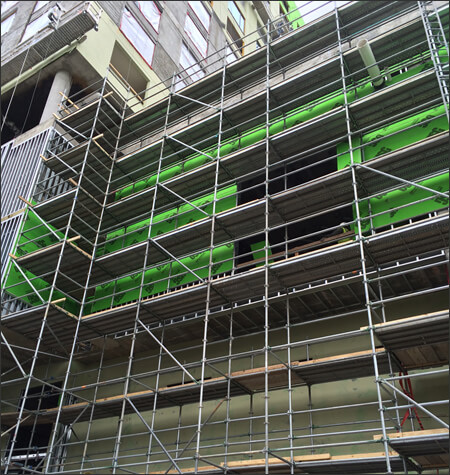In the vibrant realm of metropolitan development, commercial scaffolding stands as a fundamental pillar for efficient construction and renovation projects. As city skylines continue to change, the need for innovative scaffolding solutions has rarely been more essential. This article delves into the multiple aspects of commercial scaffolding, highlighting its importance, varieties, and how it can considerably enhance safety and effectiveness at job sites.
From high-rise buildings to retail spaces and large venues, understanding the role of scaffolding is vital for any construction expert. We will examine how commercial scaffolding not only supports structural integrity but also affirms compliance with security regulations, guiding you through the fundamentals of permits, inspections, and training necessities. Join us as we discover the key elements that make scaffolding an necessary tool in modern construction endeavors.
Comprehending Business Scaffolding
Business scaffolding is a critical aspect in the building and renovation of edifices, providing a transitory framework that holds up specialists and materials. It permits for safer access to elevated or challenging areas during various projects, from fresh constructions to wide-ranging renovations. As urban spaces grow increasingly crowded, the need for tailored scaffolding options has increased, highlighting the importance for careful organization and engineering.
There are multiple forms of scaffolding utilized in business initiatives, including framing systems, modular systems, and suspension scaffolding, each appropriate to precise tasks and environments. Frame scaffolding is one of the most frequently used options for its flexibility and straightforward assembly. Modular systems, on the other hand, is esteemed for its versatility and simplicity of transport. Understanding the different options available is crucial for selecting the most suitable system that fits the particular demands and conditions of a job.
Security and conformity in corporate scaffolding cannot be overstated. Adhering to OSHA regulations is vital for securing a safe job site, as scaffolding can pose significant hazards if not well erected or upkept. Regular safety inspections and thorough training for all team members are imperative to reduce risks, guaranteeing a secure work area while improving overall project efficiency.
Security and Adherence in Scaffolding
Safety and compliance are fundamental elements of commercial scaffolding, guaranteeing that workers can work without risk while complying with regulatory standards. The Occupational Safety and Health Administration sets the rules that regulate the design, use, and maintenance of scaffolding systems. Construction companies must ensure that all scaffold materials complies with OSHA standards, providing the necessary safety measures for workers at height. Frequent training and updates on safety protocols are vital to ensuring compliance and promoting a culture of security on-site.
Modern scaffold systems also boost security, incorporating features such as guardrails, safe entry points, and anti-slip materials. Adherence with safety regulations not just protects employees but also minimizes potential liabilities for companies. Effective safety management includes conducting routine inspections and resolving any hazards promptly. By emphasizing security and adherence, companies foster a safe workplace that can greatly increase employee satisfaction and productivity while preventing costly incidents.
Committing in professional scaffold solutions guarantees that security and adherence are expertly managed. Experienced scaffold companies offer knowledge of standards and best practices to the project, making sure that all components of scaffold setup and maintenance are carefully adhered to. Partnering with professionals not only reduces the chance of incidents but also guarantees that projects proceed effectively and efficiently, meeting crucial deadlines without compromising safety requirements.

Planning and Overseeing Scaffolding Tasks
Efficient planning is crucial for the effective execution of framework tasks. Begin by analyzing click this link now ’s exact needs, including the size of effort, kind of construction, and site conditions. Consult with important stakeholders to establish practical needs including delivery times, site entry points, and the design of framework systems. This initial groundwork helps create a specific timeline and budget, minimizing delays and confirming that resources are assigned properly.
Once the planning phase is complete, focus on the administration aspect to guarantee smooth operations on-site. Ongoing communication with your framework crew, site managers, and other contractors is important for tackling any issues that may arise during the building process. Utilizing project management software can streamline task assignments, track progress, and oversee deadlines effectively. Additionally, designating specific roles and duties within the group can enhance ownership and promote collaboration.
Safety must remain a major priority throughout the support assignment. Establish a comprehensive safety plan and perform regular training courses to confirm that all workers are aware with procedures and optimal practices. Conducting routine safety inspections will help identify potential hazards and ensure compliance with OSHA regulations. By creating a culture of security and alertness, you promote an environment that safeguards workers and promotes productivity during the entire scaffolding process.
